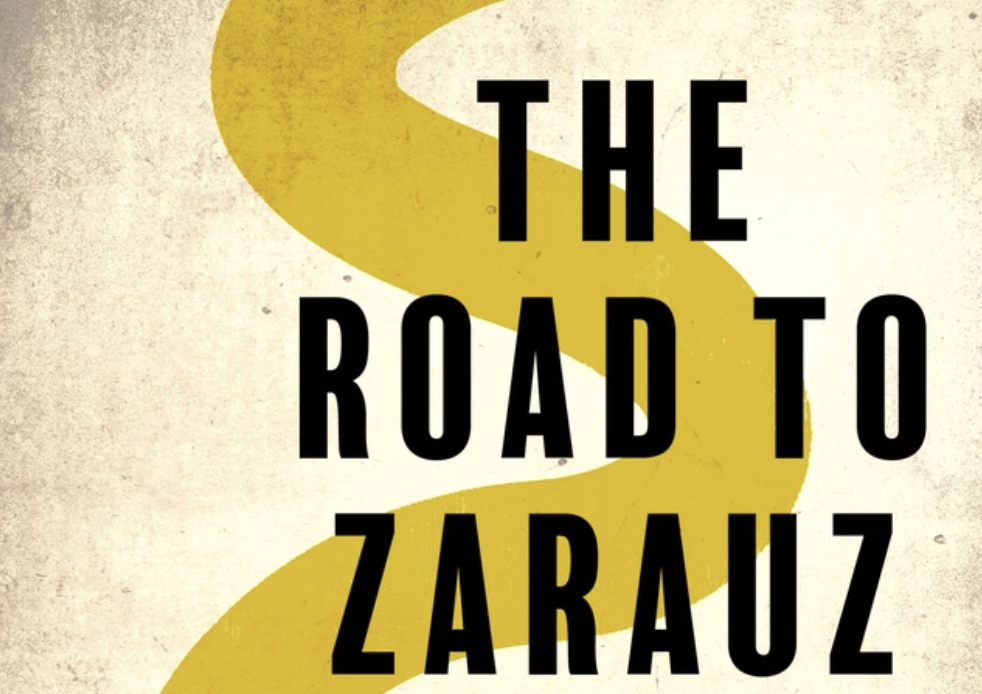Dylan Moore takes a look at Sam Adams’ coming of age story set in Spain 1954.
The novella is a slippery form.
Its parameters stretch from a single idea containing too many words to qualify as a ‘short story’ to the perfection of a novel boiled down to its essence. The Road to Zarauz (Parthian), Sam Adams’ atmospheric story of four friends driving a Morris Minor south across Europe in the summer of 1954, sits near one end of this spectrum.
A handful of quickly sketched characters; a linear journey framed by a narrative voice thinking back over events many decades later; just the one really dramatic event – Adams’ slim volume comes in definitively as one of that strangest of literary creatures, the long short story.
The book’s lack of pronounced action, however, does not constitute a demerit. On the contrary, the finale on the beach at Zarauz – a few miles up coast from San Sebastian in Spain’s green north-eastern corner – is what holds the reader gripped from start to finish.
Best devoured in a couple of sittings, The Road to Zarauz evokes a lost time when both cars and university education were rarities, especially in the valleys of south Wales, and when memories of the Second World War and its precursor in Spain were both recent and raw.
The unnamed protagonist is a callow, impressionable young man, described by his older self as ‘hardly more than a child’, along for the ride with ‘mercurial’ Richie, wracked by Catholic guilt; steady, careful Gwyn, the only one with a girlfriend back home; and war veteran Alan, in his late twenties, a good few years older than the rest.
The four set out across France with the vague intention to see Spain, a country that – in 1954 – seems far away, and very certainly beyond the sheltered experiences of the three south Wales college boys.
Adams’ tale fits neatly into such well-worn genre categorisations as ‘road trip’ and ‘coming of age’. Coupled with the author’s careful, crafted, unflashy prose, the book’s appeal therefore lies in neither style nor character and plot, but in its setting.
“Their linguistic jokes emphasise an affinity between Wales and Catalonia, a narrative that has been drawn on for decades by socialists and nationalists alike.”
The Spanish Civil War and its aftermath have cast inordinately long shadows, not only across the subsequent history of that country, but also the English-language literary imagination. Before the Morris Minor skirts the outer edge of Barcelona, and the Welshmen narrowly avoid a brush with the Guardia Civil, Alan impresses on the group the importance of reading George Orwell’s Homage to Catalonia to understand what had happened here less than twenty years before.
Later, they attend a bullfight, where the narrator relays knowledge gleaned from Ernest Hemingway’s Death in the Afternoon. Following in the footsteps of Orwell and Hemingway has been a literary tourist trail for almost a century now, and The Road to Zarauz is neither first nor last novella to draw on the resonances of these greats.
In Wales, and the south Wales coalfield in particular, there remains a romanticism among leftists about the days of the International Brigades, and the purity of a cause that pitted solidarity and socialism against falangist fascism for control of a wild, mysterious country – a subcontinent apart.
Adams makes much of the protagonists’ crossing of the Pyrenees at a village called Llo. Their linguistic jokes emphasise an affinity between Wales and Catalonia, a narrative that has been drawn on for decades by socialists and nationalists alike.
And perhaps it’s no accident that the four men end up in the Basque Country: ‘in a landscape reminiscent of home, green hills and leafy woods, fields in slopes with haycocks or flourishing well-watered crops, and small, neat villages, each with a church at the centre.’
The lyricism of Adams’ prose is given full vent in such passages, description more akin to that found more often in travel writing than fiction: ‘The gloss of grass and trees spoke of rainfall even in summer. The sun was still hot, but the blue sky was moving with the passage of billowing clouds.’
Tragic denouement aside, the most affecting moment of the novella is when the narrator describes the ‘kind of giddiness and… thickness in the throat’ he feels in reaction to Richie’s recitation of Wordsworth, ‘sounding among the great oak beams of the candle-lit posada… with a sensibility so profound I have never forgotten the northern chill it gave… in the warmth of the Spanish night.’
Later, on this same page – 111 – he reflects that: ‘I don’t suppose young men on a continental jaunt today recite poems to one another.’ It is a wry observation that puts one in mind of Benidorm and budget airlines, and of the anti-tourist movement in contemporary Barcelona.
Syniadau uchelgeisiol, awdurdodol a mentrus.
Ymunwch â ni i gyfrannu at wneud Cymru gwell.
And yet there is something – mostly hidden in the now-familiar rack of rioja and shrink-wrapped serrano ham in your local supermarket, the tapas bar in every town – in this interplay between the north and south of Europe. We are still, in our cold climate culture, intoxicated with the warmth and poetry and romance of Spain; its food and drink, its unspoken Arabic roots in old Al Andalus – and its twentieth century heart of darkness.
There is nothing in the form, plot, characters or setting, narrative voice or style – that is to say, in the raw ingredients – of Sam Adams’ story that make it stand out on the crowded shelves of books about young men seeking adventure in mid twentieth century Spain.
Its characters’ exploits – getting drunk, driving on a provisional licence, chatting up a religious tourist from Canada – pale in comparison with the events of For Whom The Bell Tolls, The Spanish Labyrinth or A Moment of War.
But its aftertaste will linger long in the memory, because what happens in Zarauz resonates with the long shadow that fell over the country in 1936, and even now – in these days when Brits abroad have long since ceased to recite poetry – has not entirely lifted.
All articles published on the welsh agenda are subject to IWA’s disclaimer.




